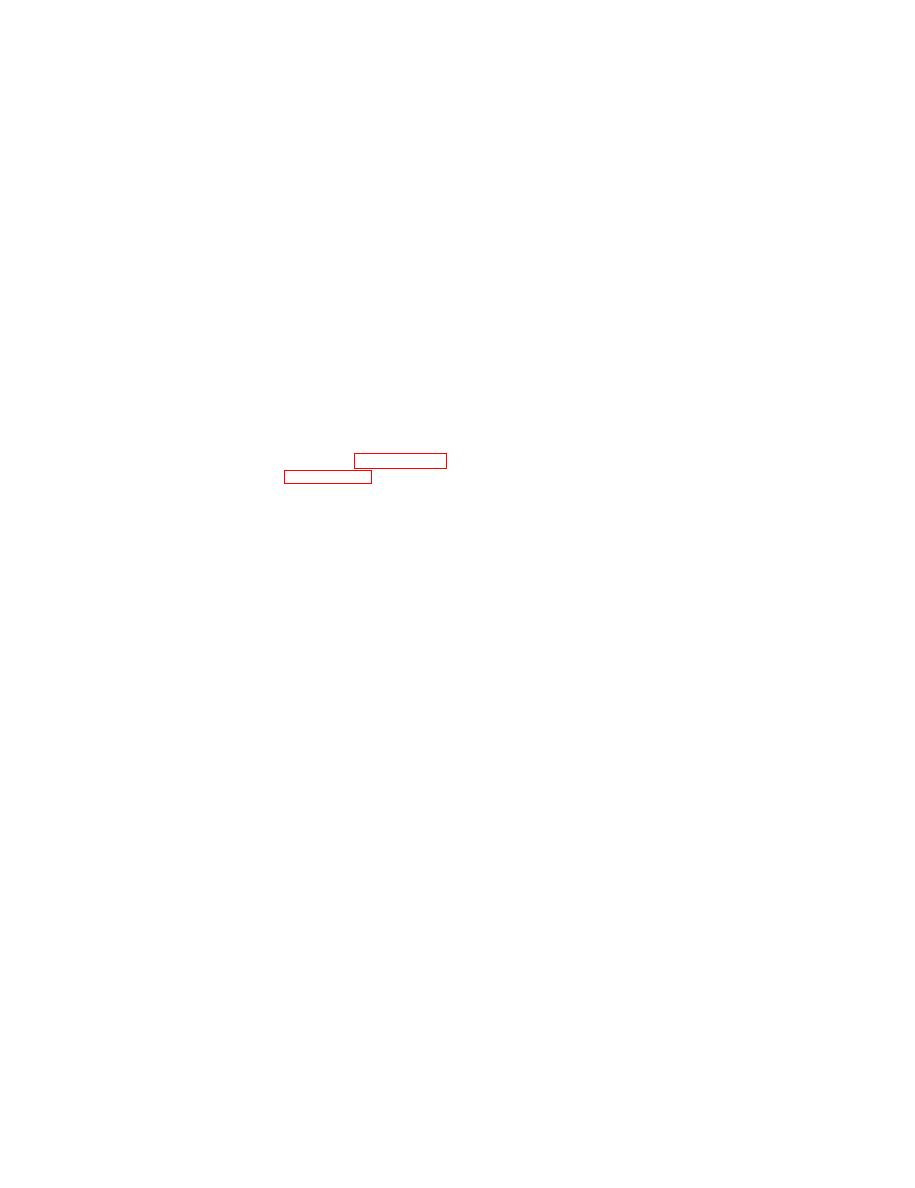 |
|||
|
|
|||
|
Page Title:
REMOVING OR INSTALLING CONNECTORS-continued |
|
||
| ||||||||||
|
|
 TM 9-2835-255-34
REMOVING OR INSTALLING CONNECTORS (Continued)
Dry the outside surface of electrical connectors and receptacles with a cloth before loosening them for
disassembly. Moisture can be present from rain, snow, washing, or dew.
If connectors cannot be removed by hand, use conduit style slip joint pliers with plastic jaw inserts
to loosen them. Finish removal by hand. Straighten any bent contacts with long round nose pliers.
When installing connectors on larger harnesses, another soldier will be needed to help aline the
mating ends of the cable. Make sure that contacts and keyways line up. Tighten twist-snap-type
connectors until a click is heard. Tighten screw-on-type connectors until ratchet noise is heard to
indicate that connectors are tight.
Put a protective cap or plug over any electrical connector that is left uncovered. Cover connectors on
any item being moved to or from the tank. Remove covers when connectors are installed.
Look at connectors for broken, missing, or pushed in contacts before making any connections. If a
connector is bad, repair it. Tighten connectors by hand whenever tools are not called out.
CARE
OF
REMOVED
PARTS
AND
COMPONENTS
SUPPLIES: Writing pencil (Item 27, Appendix B)
Tag (Item 26, Appendix B) (as required)
Before removing any parts or components, check to see if the part or component and mounting area
are identified. If not, write identification on tags and fasten tags to the part or component and the
mounting area. If tag cannot be fastened to a part or component or mounting area, mark
identification on the part or component and mounting area with pencil.
Look carefully at parts and components for signs of trouble while doing routine work. Replace
damaged or cross threaded screws and nuts. Check for torn or stretched gaskets or leaks. Check
mounting, parts, and shafts for alinement. Tighten loose parts. Straighten bent parts if possible and
check for cracks. Replace damaged or missing parts.
CARE
OF
SLINGS
Check slings for damaged, worn, or cracked links in chain or breaks, cuts or signs of fraying cables.
Replace damaged slings.
Check that safety hooks and latches are in good working order and are not damaged. Replace slings
with damaged hooks or latches.
SILVER
BRAZE
INSPECTION
Check brazements after repair for cracks. Cracks are not allowed.
F-4
|
|
Privacy Statement - Press Release - Copyright Information. - Contact Us |